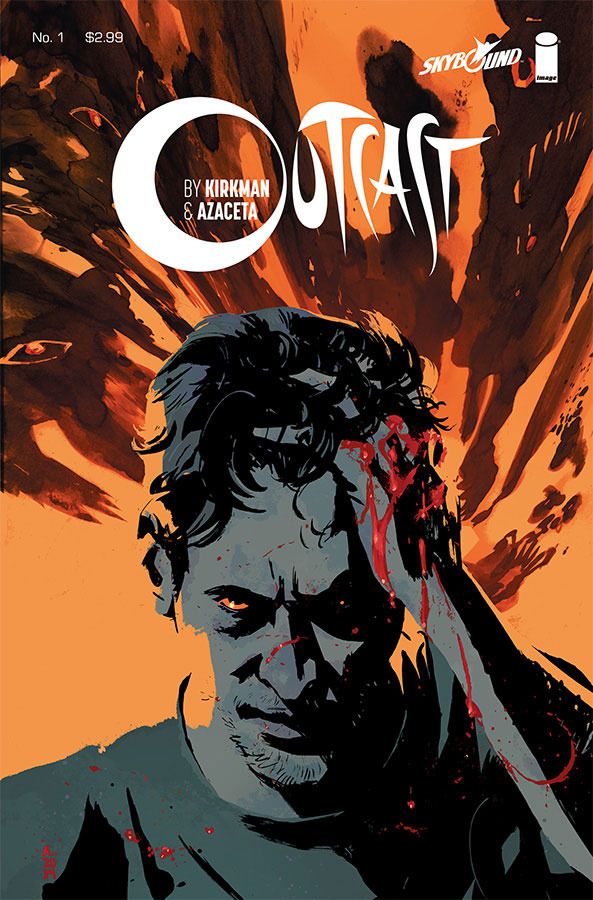Robert Kirkman, Paul Azaceta and Elizabeth Breitweiser come together exceptionally to deliver a strong first issue to "Outcast" #1. Kirkman's story of one man's destroyed life and his attempt to finally get to the bottom of it is made magnificent thanks to the art team of Azaceto and Breitweiser.
Stories about possession are a dime a dozen, and comics readers especially see these kind of stories mined quite often -- and too often, poorly. However, Kirkman's approach is surprisingly human and nuanced without all the over-the-top cliches that so frequently accompany these tales, pitching them into the cartoonish rather than the emotional. Kirkman deftly handles the tropes that come with a story like this and subverts them just enough to make everything interesting while holding onto an emotionally resonant core.
The biggest win for Kirkman's story is the art team of Paul Azaceta and colorist Elizabeth Breitweiser. Azaceta really capitalizes on the humanity of Kirkman's story, making it relatable and almost matter of fact. This is not a world of superheroes or even really the supernatural, this is the real world. The hard, unromantic real world, full of regular looking people with (mostly) regular problems. For a precious few, like Kyle, all is not entirely what it seems, and his knowledge of what others cannot see has run his life quite literally and desperately into the ground. Azaceta captures that desperation with absolute perfection. It's his exceptional visual execution of Kyle's depressing life that makes the reveals that follow all the more powerful for their simplicity and hopelessness.
While Azaceta triumphs in delivering visuals that feel realistic and grounded, Breitweiser provides the exquisite tonal shifts and most of the horror in the story. Breitweiser has long been a powerhouse of a colorist, but it's particularly impressive to see her work here, which is so different, though equally as skilled as her tremendous work on "Velvet." The way Breitweiser bathes a scene in color is evocative and gloriously moody. Shifting effortlessly from the subdued slightly greenish grey tones of one man's depressing life, to the dark blues of a room in shadow, to the red glow of the sun setting on a near tragedy, the blue-greens of deepening night, and the grey of memories, Breitweizer moves the reader through this tale with precision. It's particularly fitting that color and light actually plays an actual role in the plot in this issue, and it's thanks to Breitweiser that that scene (and all the others, quite frankly) land as well as they do.
The plot reveal toward the end of "Outcast" #1 takes the book from being a thoughtful standalone story to a more marketable story -- something you can package and brand and launch into an ongoing series (as well as a television show), which is not necessarily bad. "Outcast" #1 would have been a good standalone comic, or the first piece of a wonderful graphic novel, but instead it's the first installment of something much bigger and more ambitious. Given the quality in this first issue, it's without doubt that readers will return for the next piece of the puzzle -- and if Kirkman, Azaceto and Breitweizer can keep it up, many, many more pieces.

